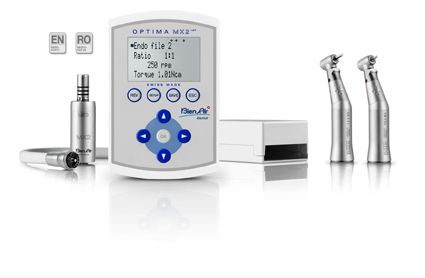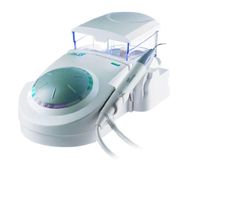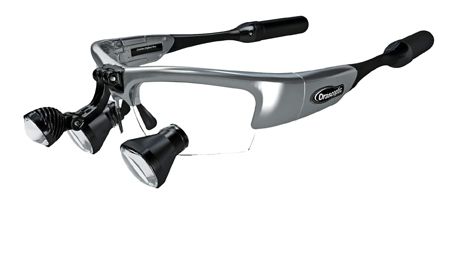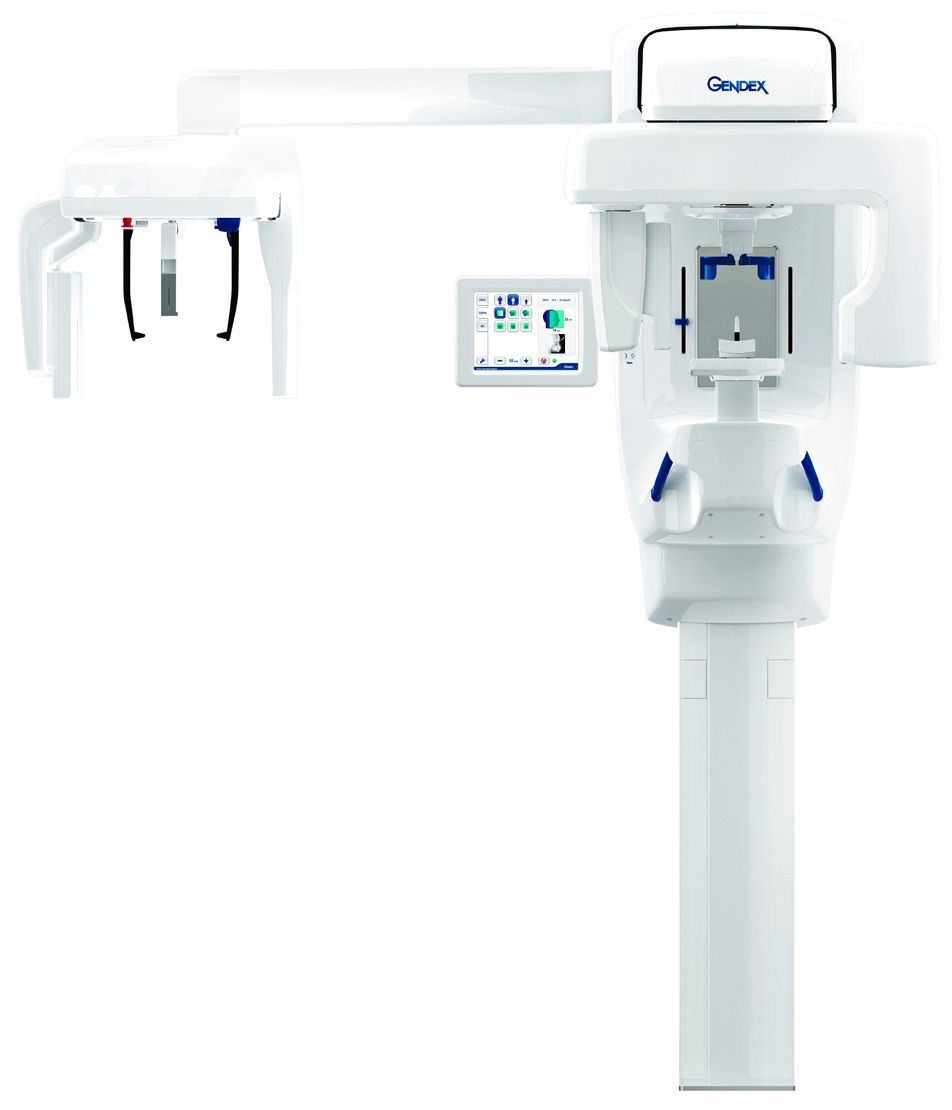Dr. John Flucke: Top 5 new dental product test drives of 2013
I flat out cannot believe that another year has melted away that quickly. It feels like when I woke up this morning, it was Memorial Day!
I flat out cannot believe that another year has melted away that quickly. It feels like when I woke up this morning, it was Memorial Day!
However the best way for me to keep track of the passage of time each year is to think about all the amazing devices, procedures, tools, and programs that I get to test and evaluate every year here at DPR.
This year, I had some really good products to choose from and, quite honestly, this was one of those years where having a Top 10 Test Drives would’ve made my job a whole lot easier.
However, it also can be a nice thing for you, the reader, because you can rest assured that this year’s Top 5 faced stiff competition and still came out on top. The products listed here are not in any particular order. They are all equally deserving.
So without further ado, I present this year’s Top 5 Test Drives.
Orascoptic XV1
More than 50% of U.S. dentists wear some type of magnification, and with many schools encouraging students to do so, those numbers will only continue to climb. This really warms my dental heart as I am a huge proponent of magnification for many reasons.
Magnification is no longer a “want” but truly a “need” for ideal treatment, yet it’s not just a matter of seeing things “bigger.” There’s also auxiliary lighting. Having a surgical telescope setup that not only magnifies, but completely illuminates the field, is a game changer of epic proportions.
Until recently, when dentists purchased surgical telescopes they first had to purchase the glasses setup. Once brand, magnification level, and style were locked in, the user then looked at what lighting options were available. This means you’re using two separate components to create one piece of “dental gear” you’ll use for every procedure. Auxiliary lights are tethered to battery packs, batteries can be heavy, cords can break or snag on things. Many of us have been dreaming of a better solution.
Dream no more! The Orascoptic XV1 is the first all-in-one surgical telescope and headlight. The LED light components are built into the frame. An auxiliary lighting system is basically three pieces--the battery, the wiring and the LED.
The batteries are placed in two “tubes” that attach to the end of the arms of the frame. Wires are hidden inside the frame and run to the LED, which is also part of the frame. The result is a clean stylish look that does away with wires and a battery pack.
The system also features Capacitive Touch Controls. There is a logo on the temple area of the glasses (both Left and Right). By lightly touching this area with the forearm or another uncontaminated area, the XV1 can cycle through High/Low brightness and Off/On.
The LED “Low” setting provides light intensity of 2500 foot-candles and 10 hours of battery life while “High” provides light intensity of 4000 foot-candles and 6 hours of battery life. The system also comes with a charger and a spare set of batteries that will charge in less than 2 hours.
The frames can accommodate telescopes from 2.5X to 4.8X, and I have been impressed with this setup from the day I put them on.
Bien-Air Optima MX2 Electric Handpiece

I experimented with the idea of using electric handpieces a few years ago. The concept was a good one, but I found drawbacks in thick bulky cords, overly large handpieces that were noticeably heavy, and less than optimal uptime. Those problems were enough to keep the idea of electric handpieces off my radar for quite some time.
Fast forward to 2013 when the folks at Bien-Air introduced me to the MX2 Electric Handpiece system.
This system took the problems I had experienced with previous electrics and not only beat them … it blew them out of the water. The system comes with two contra-angles. One is a 1:5 gear ratio and the other is a 1:1 gear ratio. These two contra-angles allow the user to operate them in speeds from 100 rpm to 200,000 rpm. To clarify that point, the 1:1 contra-angle can deliver 100-40,000 rpm while the 1:5 contra-angle can deliver 500-200,000 rpm.
[ Read real product reviews from real dentists on Dental Products & Reviews ]
For those of you who are students of rpm in dentistry, you may notice the 1:5 contra-angle does not rotate as fast as an air-driven turbine. This is because electrics like the MX2 provide significantly more torque than their air-driven counterparts. Air turbines spin faster to compensate for a lower amount of torque.
When an air turbine makes contact with tooth structure, it actually drops in rpm down to about that of an electric. Because electric handpieces use gears and electric motors with significantly higher torque, their rpm does not drop when in contact with tooth structure. This allows the user to operate the device at lower rpms and accomplish significant reduction; they have more control and zero chance of stalling.
The MX2 is 30% shorter and 23% lighter than previous models. Pair that with the fact the cord is also much lighter and more flexible than in years past. These features combine to give the operator a much better view of the field and much less hand and wrist fatigue.
My maintenance issues from previous electrics were laid to rest when I discovered the Bien-Air MX2 has ball bearings that are “lubricated for life.”
The MX2 is completely autoclavable and yet requires minimal maintenance. In fact, in my time testing and using the MX2 system I have been impressed with just how reliable the system is.
Then comes that part that makes a diehard geek like yours truly so glad to have a career in dentistry. The system also has the Optima MX2 controller. In a nutshell, the Optima is a “brain” that provides intelligence to the power of the handpiece. The Optima MX2 controller has an LCD touchscreen that allows the user complete control over the handpiece.
Simply select something like “crown preparation” and preset parameters are applied such as maximum speed allowed, torque allowed, etc. This allows the operator to truly have the ability to control the procedure from start to finish.
This system has completely changed to way I look at electric handpieces. If you are in the market for a new handpiece, you really should have this design on your short list to evaluate.
Doxa Ceramir Crown & Bridge Cement
As a techie, I don’t usually get all worked up over a new cement, but every once in a while something comes along that could change the landscape of dentistry. Ceramir is just such a product.
Ceramir offers “Nano-structurally Integrating Bioceramics,” or NIB. This is a product that takes conventional glass ionomer technology and interlaces it in a specific mix with Ceramir technology.
When I first spoke with the folks at Doxa about Ceramir, I was concerned that the material comes in capsules that are required to be “activated” and then triturated. I felt this was a serious drawback. Triturator manufacture, purchase, and usage has been in decline for several years, tied directly to the decrease in amalgam use. The brain trust at Doxa explained to me the reasoning behind the need for precise measuring, which can only be accomplished through the capsule interface. Once I understood that, my opinion was completely reversed.
In several microscopic studies, Ceramir C&B clearly shows the material building hydroxyapatite. The material is truly “bioactive.” Over time, the cement’s chemistry evolves and forms a layer of hydroxyapatite between the tooth and the restoration. This helps decrease sensitivity and the potential for staining at the margin.
As all-porcelain crowns have become stronger and more esthetic, margins don’t need to be placed subgingivally. Many doctors leave their margins supragingival or directly at the height of the gingival crest. While this is better for overall periodontal health, you risk staining. Ceramir is less likely to stain because of the formation of the hydroxyapatite crystals, which also increases retention.
Doxa has created a new category of dental cements that may very well usher in a game-changing, outside the box approach to a variety of restorative procedures. ceramirus.com
ACTEON North America P5 Newtron XS LED

Every once in a while, a product comes along that surprises me with both its versatility and simplicity. That’s exactly the way I feel about ACTEON’s P5 Newtron XS LED. The device is a piezoelectric scaler and so much more.
When one thinks of the term “piezo scaler,” it conjures the image of a high-end device used in the hygiene department for cases requiring extra energy to help remove tenacious subgingival deposits. In the case of the P5 Newtron XS LED, you’d be correct, but you’d be missing out on lots of other uses.
The device has a 100,000 lux LED light (9290 foot candles) and an ultrasonic frequency of 28 kHz to 36 kHz. It has a nice kit of tips for perio procedures that allow easy access to any area of the mouth, as well as a self-contained irrigation system.
The perio uses alone justify having this device in your office, but we’re just getting started. Those of us doing endo are well aware of the great benefits of proper irrigation. Now we can create agitation of irrigants without damaging the canal wall by using Irrisafe instruments in the Newtron handpiece.
There are also tips specifically designed for endo. My favorite are very small diamond coated tips that remove small amounts of tooth structure while locating canals that are sclerotic or difficult to find. The Excavus tips used for operative/restorative dentistry are valuable when performing minimally invasive restorative procedures, and the Perfect Margin tips for fixed prosthetics allow you to create a rounded or shoulder margin that is free of unsupported enamel rods.
These end cutting tips are the final step in my fixed prosthetic procedures before retraction. My office has found the Perfect Margin tips are a big plus for digital and traditional impressions, which then leads to better fit for the final restorations. acteonusa.com
Gendex -- GXDP-700 S
I made the decision to go digital in the late 1990s and never, ever looked back. Since then I have seen the quality of digital images skyrocket and costs plummet. And it hasn’t just been the costs of the images. Hard drives and other hardware have continued to drop in cost as well.
Now, while this column is called “Top 5 Test Drives,” this particular situation wasn’t really a “test.” We were in need of a new panoramic x-ray and we have had good experiences with Gendex radiographic equipment going back to our Gendex GXCB-500, which we were thrilled with from the day we bought it.
The practice had owned a Gendex Orthoralix 9200 digital panoramic and cephalometric system since 2002 and we had been very happy with it as well, so when we decided to upgrade to a new unit with even better resolution, Gendex was at the top of our list. We knew that we not only needed the image quality Gendex provided, we wanted to have the mobility of the data. Nothing can beat being able to see radiographs anywhere in your office or anywhere on the planet.
But there are a few other important reasons we went with the GXDP-700 S. The first was image quality. The radiographic images that come from the device are very crisp and clear. We were impressed when we saw the images taken during demos, but there is something about seeing images taken in your own office that just adds a certain amount of “gee-whiz” factor, which gets you excited about it in your work environment.
The other really critical piece of the radiographic puzzle for us was cone beam computed tomography (CBCT). We have been using 3D imaging in the practice for a few years now, and we simply cannot practice without it. It’s truly become one of our “must have” devices for a lot of what we do. We felt having a second system in our three-doctor practice would actually help improve our workflow.
The GXDP-700 S is a great device that can create traditional 2D panoramic images or 3D cone beam images. When
it came time to replace the 9200 we were thrilled that we could put another device into the same space that would provide both 2D and 3D.
The GXDP-700 S has a separate sensor for 3D that is built into the device. That means 3D can be accomplished just by pushing a button. There are no complicated maneuvers to perform, no putting things “on hold” while we switch over to 3D. Just push a button and take a scan.
The device offers a variety of views and resolutions. No matter what the procedure, we have a 3D option for it. The variety of views also means we image only the areas we need with the resolution we need. For our patients that means minimum exposure.
All of this from a device that occupies the same basic footprint that at one time might have held a film based system. Amazing!
Wrapping Up
So there you have the Top 5 Test Drives for 2013. I hope you’ve enjoyed this as much as I’ve enjoyed doing the research for you.
If you have a product you’d like to see evaluated or if you have a product that you would like to get in my hands, feel free to drop me a line. Thanks for reading!
Want more from Dr. Flucke? Check out this video and learn how to select the right curing light for you ...



